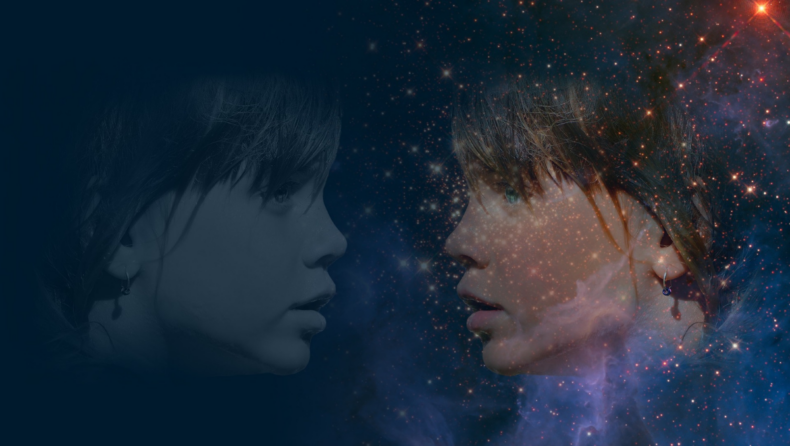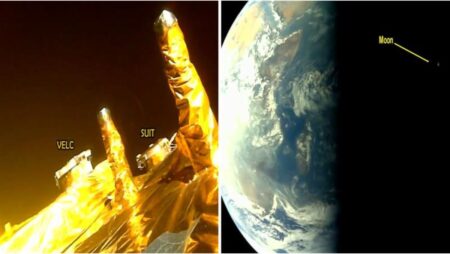According to a bizarre new notion, there may be another “anti-universe” that exists before the Big Bang, running backward through time.
The theory assumes that the early cosmos was small, hot, and dense – and that time was symmetric in both directions.
If the new hypothesis is correct, dark matter is nothing more than a novel flavour of a ghostly particle known as a neutrino that can only exist in this type of universe.
And, according to the hypothesis, there would be no need for a phase of inflation following the Big Bang that rapidly enlarged the size of the newborn cosmos.

What is Cosmic symmetry?
A set of fundamental symmetries in nature has been established by physicists.
Charge (if you flip the charges of all the particles participating in an interaction to their opposite charge, you get the same interaction); parity (if you look at the mirror image of an interaction, you get the same result); and time are the three most essential symmetries (if you run an interaction backward in time, it looks the same).
The name of this fundamental symmetry is CPT symmetry, which stands for charge (C), parity (P), and time (T).

Most of these symmetries are obeyed by physical interactions most of the time, but there are exceptions. Physicists, on the other hand, have never seen a violation of all three symmetries at the same time.
Extending CPT-symmetry to both universes
We live in an expanding cosmos, and the universe’s evolution takes place over time. There must be a mirror-image cosmos that balances out our own to maintain CPT symmetry throughout the cosmos. This universe would be charged in the opposite direction as ours, flipped in the mirror, and run backward in time.
For one thing, a CPT-respecting universe grows organically and fills itself with particles without the need for inflation, a long-theorized era of fast expansion. While there is much economic evidence that an event like inflation had place, the theoretical picture of that event is hazy.
Second, a universe that adheres to the CPT would add some extra neutrinos to the mix. The electron neutrino, muon neutrino, and tau neutrino are the three types of neutrinos that have been discovered. Surprisingly, these three neutrino varieties are all left-handed (referring to the direction of its spin relative to its motion).
Because all other known particles have both left- and right-handed versions, scientists have long pondered if there are more right-handed neutrinos.
At least one right-handed neutrino species would be required in a universe that follows the CPT. This species would be virtually undetectable in physics experiments, influencing the rest of the cosmos primarily through gravity.
Dark matter, on the other hand, sounds a lot like an invisible particle that fills the cosmos and only interacts with gravity. The researchers discovered that the restrictions required by following CPT symmetry would result in a large number of right-handed neutrinos in our universe, which would explain for the dark matter.
Studying the twin who lies behind the Big Bang
This concept has a few observable ramifications, according to the researchers. For one thing, they anticipate that the three known left-handed neutrino species are all Majorana particles, which means they are antiparticles of one other (in contrast to normal particles like the electron, which have antimatter counterparts called the positrons). Physicists are still debating whether neutrinos have this feature or not.
They also believe that one of the neutrino types will be massless. Physicists can only put upper bounds on neutrino masses for now. If physicists can ever definitively measure the neutrino masses and discover that one of them is massless, the hypothesis of a CPT-symmetric universe will be considerably strengthened.
Finally, inflation was never a factor in this paradigm. Instead, the universe began to fill with particles on its own. Inflation, according to physicists, rocked space-time so violently that it flooded the universe with gravitational waves.
The search for these primordial gravitational waves has spawned a slew of investigations. However, such waves should not exist in a CPT-symmetric universe. If searches for primordial gravitational waves come up empty, it could be a sign that the CPT-mirror universe scenario is right.
Published By: Manan Khurana
Edited By: Khushi Thakur













